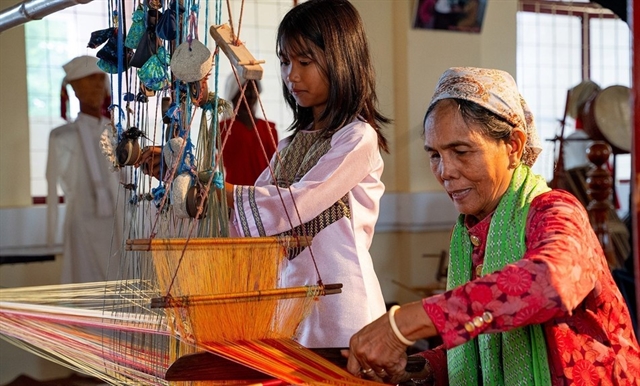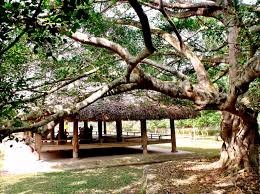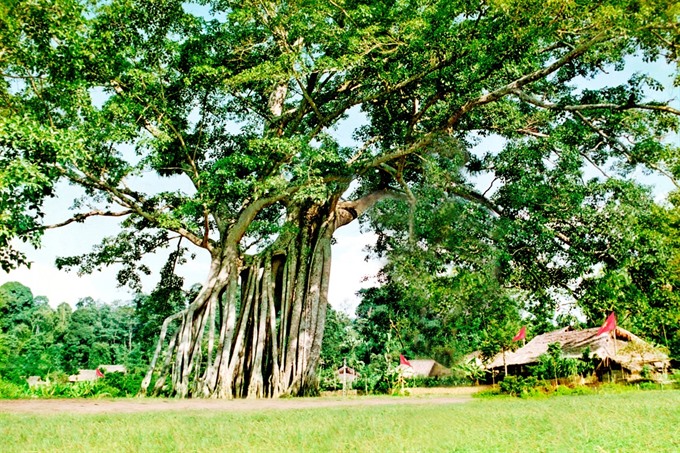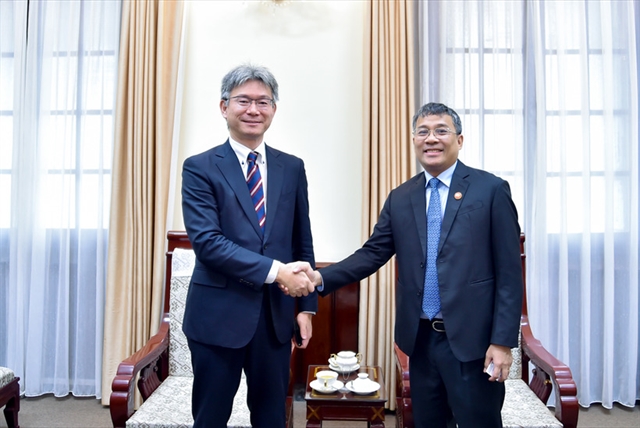 Features
Features

From Tân Trào Commune in the northern province of Tuyên Quang, the Central Party Commitee and President Hồ made important decisions to guide a mass uprising to gain power from the French and Japanese in August 1945. It is now a developing new rural region.
 |
| Back in time: The site has become a popular tourist destination. VNA/VNS File Photo |
by Vũ Quang Đán
Smooth concrete roads lined by colourful flags and flowers were the first things that greeted us in Tân Trào Commune, Sơn Dương District in the northern province of Tuyên Quang.
According to Hoàng Như Loan, director of the Tân Trào Eco-Tourism, Historical and Cultural National Relic Site, Hồ Chí Minh moved from Cao Bằng to Tuyên Quang in 1945 to direct the country’s revolutionary effort.
“He chose Tân Trào Commune to set up a revolutionary base for the whole country,” she said.
From Tân Trào the Central Party Commitee and President Hồ made important decisions to guide a mass uprising to gain power from the French and Japanese in August 1945.
Between August 13 and 15, Party leaders met and nominated a National Uprising Committee.
On August 16 and 17, the Tân Trào National People’s Congress, the early form of Việt Nam’s National Assembly, was held at Tân Trào Communal House, where members approved the Việt Minh (Việt Nam League for Independence) and nominated the Việt Nam People’s Liberation Committee, i.e. the provisional government chaired by President Hồ.
Under the shadow of an ancient banyan tree in Tân Trào, on the afternoon of August 16, the Việt Nam Liberation Army hosted a ceremony witnessed by 60 members of the National People’s Congress. General Võ Nguyên Giáp read Military Order 1, and the troops departed for Thái Nguyên and moved to Hà Nội to liberate the capital.
 |
| Safe haven: Visitors at Nà Nưa hut. VNA/VNS Photo Quang Đán |
Hoàng Thị Mai, a resident of Tân Lập Village in Tân Trào Commune, is the daughter-in-law of Nguyễn Tiến Sự, who hosted President Hồ at that time.
Mai is 78 years old now but still remembers those days.
“When President Hồ and the other revolutionaries came to stay here, I was only five,” she said. “My parents told me that President Hồ stayed up very late to work and woke up early. He ate with my family.
“My mother was worried that we did not have enough vegetables to eat. President Hồ suggested that we ate rice, boiled young bamboo shoots dipped in salted sesame, and boiled tea soup. ‘That’s delicious,’ President Hồ said.
“He also reminded my father and other villagers to plant rice and vegetables to feed the revolutionaries because more of them would come.
After a week at my house, by the end of May, 1945, the leader moved to Nà Nưa hut.”
At that time, all the families in the village were harbouring revolutionaries even though they were very poor. They all fed the guests with rice, salt and whatever they had.
 |
| Base camp: Tân Trào Communal House. VNA/VNS Photo Lê Anh Dũng |
 |
| If trees could talk: An ancient banyan tree, where on August 16, 1945, the Việt Nam Liberation Army hosted a ceremony witnessed by 60 members of the National People’s Congress. VNA/VNS Photo Lê Anh Dũng |
Building the homeland
Ma Văn Yên, chief of Bòng Village, said the village was now a good example of the developing economy in Tân Trào Commune.
“There are 177 households in the village, 75 per cent of whom are from the Tày ethnic group,” he said. “They mostly farm food crops and raise cattle.
“In recent years, many households have changed to farming new strains of trees and cattle, and applying modern technology in farming,” he said.
“Many households have planted dragon fruit,” he said. “Only five households are considered ‘poor’ in the village. The average income per head has reached VNĐ36 million/year (US$1,500).”
In 2014, Tân Trào was the first commune in Tuyên Quang to reach the national standard of a New Rural Area.
“Locals’ lives have much improved,” said Hoàng Cao Khải, chairman of Tân Trào Commune’s People’s Committee.
“There are public facilities like cultural houses and playgrounds in every village,” he said.
Nearly 97 per cent of households in the commune have access to electricity; 100 per cent of schools in the commune reach national standards; 100 per cent of inter-commune roads are covered with concrete; and 90 per cent of people in working age have regular jobs. The average income per head in the commune has reached VNĐ28.3 million/year while the ratio of poor households has fallen to 4.4 per cent.
Local jobs are becoming more and more diverse. Besides agriculture, Tân Trào has promoted tourism, services and trade.
The commune authorities has also called for investment in service centres and tourism sites to serve visitors to Tân Trào. VNS




